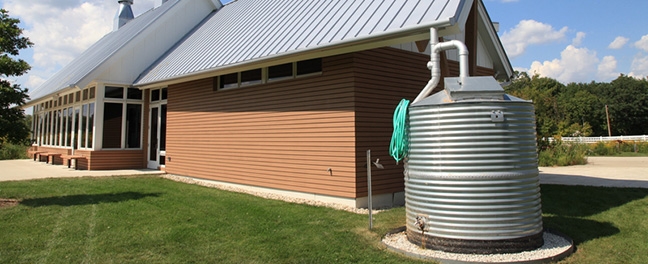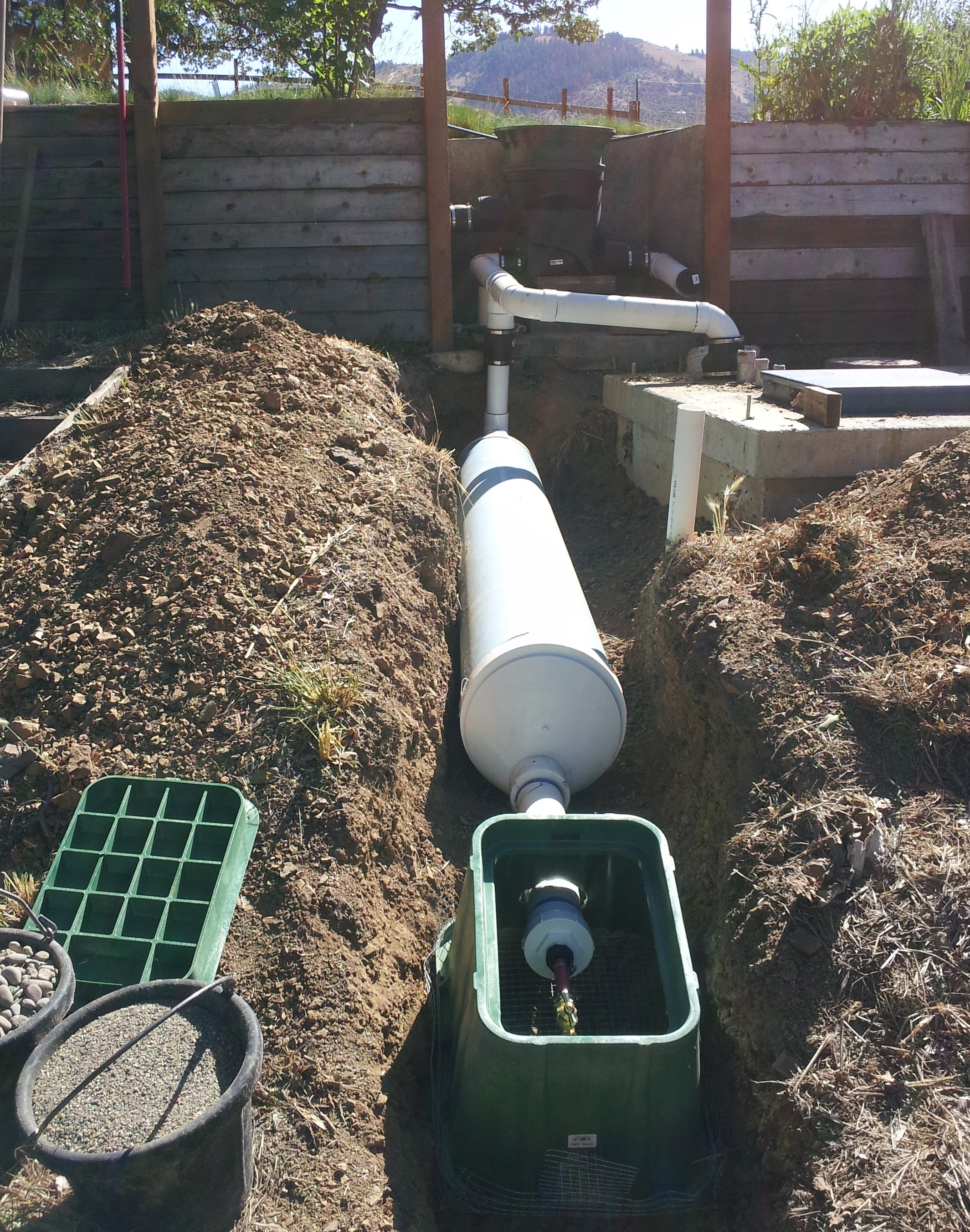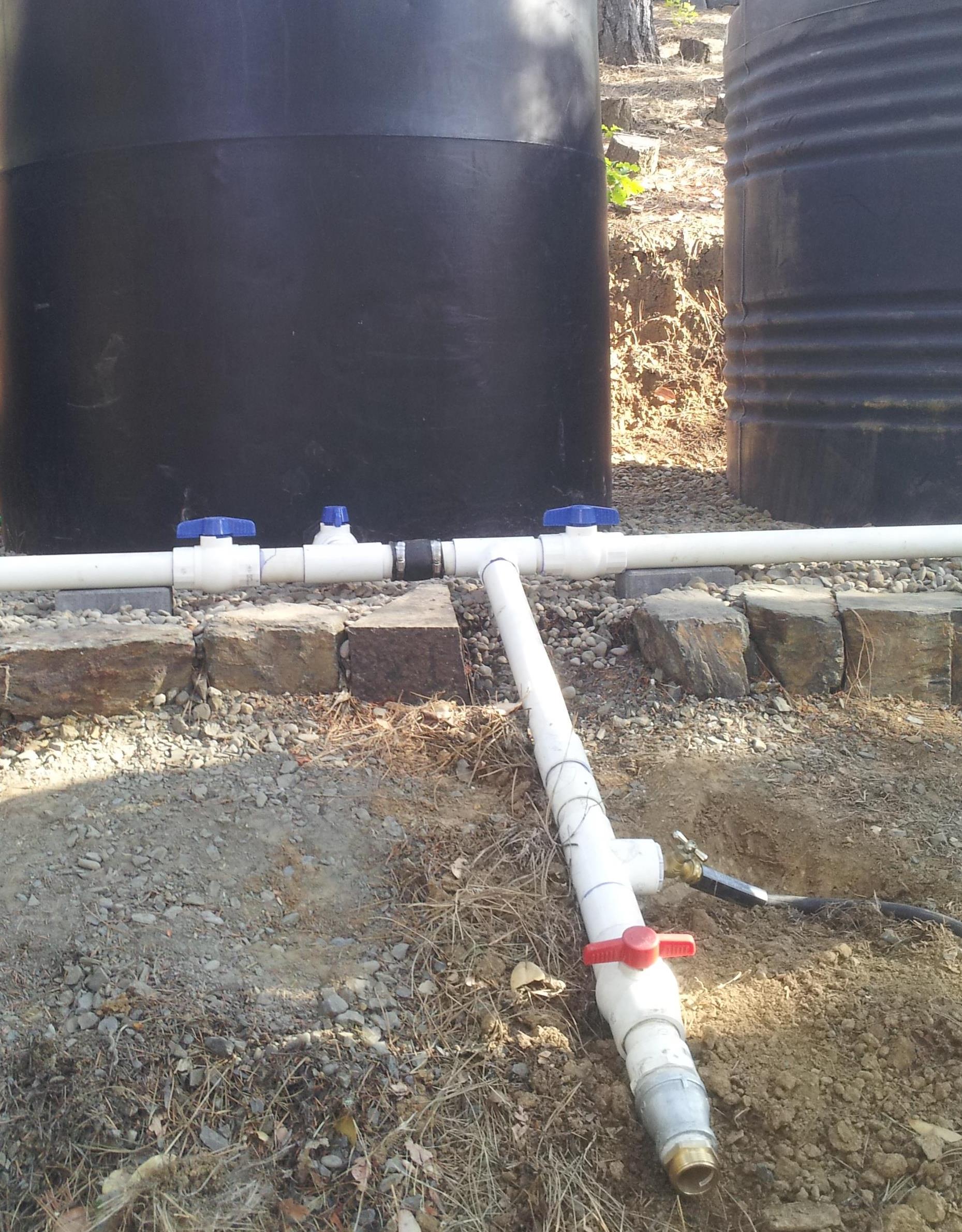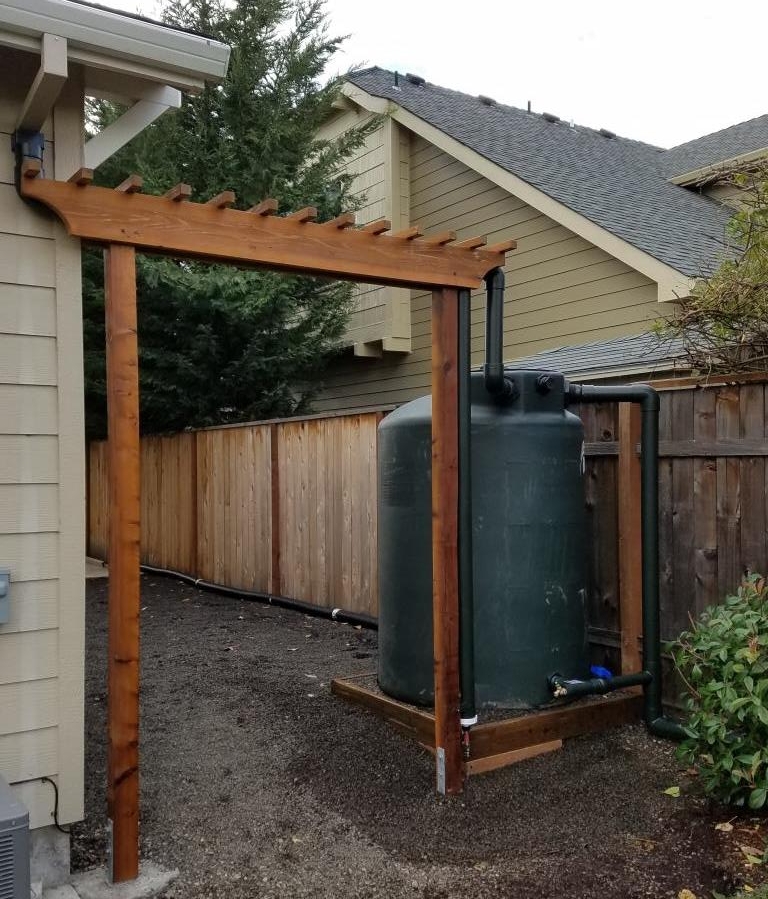Rainwater catchment systems can be as simple as a rain barrel placed under a downspout, or large enough to supply an entire garden or orchard with water during a dry summer.
Rainwater catchment with steel roof and tank.
Have you ever wished that it rained more during the summer, instead of in the winter and spring when gardens and orchards are mostly dormant? We can make the best use of seasonal rainfall through relatively simple and inexpensive methods like planted ground covers, rain gardens, porous pavement, and swales. These practices effectively reduce erosion, slow runoff that might otherwise overwhelm storm water systems, increase soil moisture, and recharge the aquifer. Rainwater catchment systems are another tool that allows us to use this resource wisely by having water on hand during the hot, dry summer. They collect water from suitable roof surfaces and store it for later use. Rainwater catchment systems were used in ancient times where clean water was scarce. Today, people use stored rainwater to reduce the volume of potable water used for activities like irrigating gardens and orchards, watering livestock, flushing toilets, and protecting structures from wild fire.
Most of us are surprised to learn how much water we use, and how much we could collect from a roof. Depending on what’s growing and how it’s irrigated, a half-acre garden and orchard needs between fifteen and thirty thousand gallons to get through a Southern Oregon summer! That seems like a lot of water, though most of our home, garage, and barn roofs shed more water than we can easily store. A square foot of roof surface captures .623 gallons for each inch of rainfall, so a 1000 square foot roof receiving 20 inches of rain each year collects almost 12,500 gallons, and most roofs are bigger!
In today’s catchment systems, rainwater flows through gutters, past a simple filter to keep out leaves and dirt, and into a tank. Tanks come in many sizes, shapes, and materials—plastic, vinyl-lined steel, fiberglass, and ferro-cement—and can be plumbed in series to expand system capacity as needs and budget allow. Tanks can be placed under a deck or alongside a barn, buried underground, inside an out-building, or set into a hillside and integrated close to where water is needed. Pumps usually move the water, but tanks elevated above the use area might rely on gravity alone. Water used for livestock, irrigation, or fire-fighting requires minimal filtration—just a screen at the gutter downspouts or tank to keep debris and critters out. Safe drinking water needs a particulate and UV filter, too.
In addition to offering a measure of independence and resilience, rainwater catchment systems also save money in the long run. Return-on-investment depends on what you include in the calculation. If you’re trucking water to your home or farm because the well is dry or contaminated, a rainwater catchment system could pay for itself relatively quickly. Where water is cheap and plentiful, and if electric power to operate a well pump remains relatively inexpensive, the rainwater harvesting payback is much longer. The investment return for most systems lie between these examples. They supplement a well or municipal water supply, which both reduces energy costs and provides some peace-of-mind if the power goes out.














